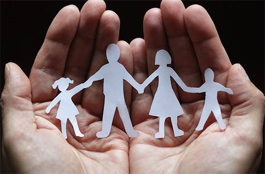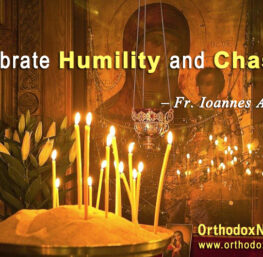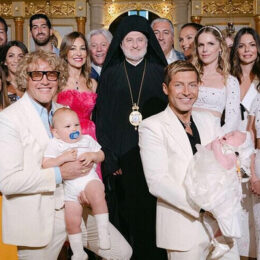 by John M. Smoot –
by John M. Smoot –
In the United States, we were fortunate to inherit a marriage tradition of monogamy with a strong stigma against divorce. Did it work for everyone? No. Did it work for our society as a whole? Yes. Was it beneficial for most children? Yes.
Then the sexual revolution happened. As Yale Professor George Chauncey writes in his article “Gay at Yale: How Things Changed”:
All around them, lesbians, bisexuals, and gay men saw their heterosexual friends decisively rejecting the moral codes of their parents’ generation, which had limited sex to marriage, and forging a new moral code that linked sex to love, pleasure, freedom, self-expression, and common consent. Heterosexuals, in other words, were becoming more like homosexuals, in ways that ultimately would make it harder for them to believe gay people were outsiders from a dangerous, immoral underworld. Moreover, the fact that so many young heterosexuals considered sexual freedom to be a vital marker of personal freedom made lesbians and gay men feel their quest for freedom was part of a larger movement. Ultimately, both gay people’s mass decision to come out and heterosexuals’ growing acceptance of them were encouraged by the sexual revolution and became two of its most enduring legacies. I think this did not represent the assimilation of gay life into the Normal so much as the transformation of the Normal itself.
Chauncey is right; we transformed the “Normal.” We created a “new Normal.” The mantra of the revolution, “If it feels good, do it,” ultimately weakened the institution of marriage with its inherent restraints and responsibilities, ballooned the divorce rate, and brought the number of out-of-wedlock births to 40 percent of all children born in America. All of which translates into poverty, crime, and suffering.
Over the course of twenty-one years as a judge in Boston, I granted thousands of divorces and heard thousands of cases involving children of unmarried parents. Yes, there were adults and children who benefited from divorce just as there were children of single parent families who did fine or excelled. Overall, however, the revolution that encouraged “pleasure, freedom, [and] self-expression” brought an immense amount of pain and misery. Was it bad for everyone? No. Was it bad for millions? Yes.
Social policy and cultural change have an impact on all of us. And clearly, the impact is not always for the good. Now, we are transforming marriage by eliminating its inherent gender distinctions.
Male and Female
Marriage has been between males and females in virtually every society in the history of mankind, regardless of time, geography, race, tribe, social structure, religion, or absence of religion (e.g., in communist countries). Even in societies like ancient Greece that did not attach a stigma to homosexual behavior, people of the same sex never married. As for those times when homosexual activity was apparently widespread, those periods tell us that culture matters: It’s unlikely that more people were genetically same-sex attracted in ancient Greece than they are today (if genetics are at all responsible for same-sex attraction), but because the ancient Greeks understood that it would be impossible for any same-sex relationship to be a marriage, their acceptance of same-sex relationships never translated into changing a fundamental institution of their society.
The essence of marriage has always incorporated a gender difference—male and female—and the purpose has been to bring men and women together for life for children. All the arguments for a “new normal” take us away from gender distinctions or confuse gender with something else.
Laws prohibiting interracial marriage, for example, were horribly wrong because the racial makeup of a man and a woman intent on marriage is irrelevant, as there are no inherent differences among races. This injustice concerning miscegenation has no relevance to the same-sex marriage issue unless you also say that there are no inherent differences between a man and a woman. And further, that gender difference is not a biological reality but a social construct imposed by society.
What’s the Big Deal?
The harms that will follow approval of same-sex marriage have been spelled out clearly and concisely by others. See for example, Sherif Girgis, Ryan T. Anderson, and Robert P. George’s argument in What is Marriage? Man and Woman: A Defense.
There are, however, two specific harms that I believe are often overlooked in most discussions of marriage, and they both involve gender.
Children
We need to be careful not to project our adult understandings onto children. They will develop identities based on the culture around them, not on the culture we grew up in. In the past, boys knew that if they married when they grew up, they would marry a woman; and girls knew that if they married when they grew up, they would marry a man. Children understood that marriage brought men and women together to form families because every aspect of our culture conveyed that message. There was nothing automatic about it. Change the culture, and you change the outcome.
What will our culture teach children now? How will parents answer children’s questions? If Billy says, “Do you think I might marry Timmy when I grow up?” what is the answer? “We’ll have to wait and see what your sexual orientation is and what Timmy’s sexual orientation is”? Or “If you get married, it will probably be to a girl”? Instead of a clear foundation for building their self-understanding, the children will receive nebulous answers.
The educational system will be an authoritative source of insecurity for children. Planned Parenthood, the Sexuality Information and Education Council of the United States (SIECUS), Advocates for Youth, Answer, and Future of Sex Education (FoSE) are powerful national organizations bonded together to promote not just sex education but also “gender education” to our young. These groups have produced the National Sexuality Education Standards “to address the inconsistent implementation of sexuality education nationwide.”
Under these standards, children ages eight to ten will be taught to “define sexual orientation as romantic attraction to an individual of the same gender or of a different gender.”
Children ages ten to twelve will be taught, among other things, to
- Differentiate between gender identity, gender expression, and sexual orientation.
- Analyze external influences that have an impact on one’s attitudes about gender, sexual orientation, and gender identity.
- Access accurate information about gender identity, gender expression, and sexual orientation.
- Communicate respectfully with and about people of all gender identities, gender expressions, and sexual orientations.
Throughout these and other guidelines published by national sex and gender education groups, there is an emphasis on teaching young children three identities, underscoring a distinction between each person’s biological sex, gender identity, and sexual orientation. This “three identity” approach may help some students, but it will damage the vast majority of them.
In fact, the “three identities” approach will confuse us all. For example, Massachusetts has a new transgender directive about the use of bathrooms and locker rooms. Suppose someone has a male body, a female gender, and a lesbian sexual orientation. Does that person use the girl’s locker room or the boy’s? This is not said in jest or with a trace of sarcasm. The issues are too important and the people involved are too important. Helping children who have gender questions navigate the world is laudable, but we need to do it in a way that demonstrates a caring and a love for all of the children.
These gender standards or a version thereof are coming to a community near you. The goal of the “gender education” groups is to wrest control of education from local communities and parents and move the curriculum to a more centralized authority.
Last month, a bill was filed in Congress (H.R. 1652) entitled the Student Non-Discrimination Act (SNDA). It has the backing of the American Association of University Women; the American Federation of Teachers; the American Civil Liberties Union; the Gay, Lesbian & Straight Education Network; the NAACP; the National Association of School Psychologists; the National Association of Secondary School Principals; the National Council of La Raza; the National Education Association; and the National Women’s Law Center.
SNDA would bring the Massachusetts gender model to all public schools across the country, prohibiting discrimination against any student on the basis of actual or perceived sexual orientation or gender identity. The bill authorizes lawsuits and permits federal authorities to intercede if necessary.
The same effort is underway in many states that still allow local communities and parents a voice in sex and gender education. Even Massachusetts allows for a certain amount of local control but a bill is pending to eliminate local community influence and impose statewide standards.
If local control cannot be taken by legislation or administrative directives, litigation will be employed. For example, the ACLU recently sued an elementary school in Utah because it removed a book about a lesbian couple from the school’s library shelves and made the book available by request only. The school settled the lawsuit and put the book back on display.
The drive to control sex and gender education in local school systems is and will continue to be relentless. The forces behind this movement are smart, powerful, and well-funded, often with millions of taxpayer dollars.
Marriage Matters
Now that television shows, movies, books, songs, the educational system, and most of our other cultural influences are promoting gay life, marriage is the last institution in which gender matters. Marriage, although damaged by the sexual revolution, still carries residual power to bring men and women together and bind them to their children. Eliminating gender removes a key ingredient in helping children recognize this.
A society that puts children first does not teach young girls that they might grow up to marry a woman and young boys that they might grow up to marry a man, because sexual orientations are far more fragile than people think and, for many, not nearly as immutable as some have claimed.
It is and has been critical to the LGBT movement to hammer home the message that sexual orientation is genetically based and immutable. However, University of California psychologist, Gregory Herek, who is himself gay and who has testified before Congress on issues concerning sexual prejudice, has stated that
The nature vs. nurture debate really is passé. The debate is not really an either/or debate in the vast majority of cases, but how much of each. We don’t know how big a role biology plays and how big a role culture plays. A possibility not often discussed is it’s not the same for everybody.
In other words, culture influences the formation of sexual orientation. For some, the influence may be close to insignificant, and for others, it may be highly significant.
When “gender education” and graphic descriptions of all forms of heterosexual and homosexual sexual activity are combined with classroom books in which a Prince marries a Prince and cultural influences such as Katy Perry’s hit song “I Kissed a Girl and I Liked It,” then yes, numerous children will be mixed up about and preoccupied with their gender and sexual orientation. Studies have already shown a substantial increase in girls identifying as bisexual or lesbian. Conjugal marriage is the last defense against total gender confusion.
Commodity Futures
The second harm that is often overlooked, as Alana Newman has addressed here on Public Discourse, is that same-sex marriage will enshrine in our culture the ongoing industrialization of collecting and distributing sperm and eggs. This would include perpetuating the callous practice of anonymous gamete sales. Unlike adoption, whereby a child already born is placed in a home, the sperm- or egg-purchase method deliberately creates a child but separates him or her from one half of “who he or she is,” as numerous donor-conceived children describe their experience.
Same-sex couples need a third person, often a fourth in the case of men, to bring a child into the world. Sanctioning same-sex marriage will result in the state mandating equal treatment for and acceptance of same-sex procreation methods. The refrain “marriage equality” is already followed by a demand for “reproductive equality.”
In response to the emotional pain and frustration experienced by infertile heterosexual couples, several states have required health insurance providers to cover infertility treatments. Now “infertility,” once considered a medical problem, must, like marriage, be redefined (or renamed) to encompass gay couples. For example, the California State Assembly recently approved a bill requiring that insurance coverage for the treatment of infertility must also be extended to gay couples.
In a recent article, “It Is Time for the U.S. to Cover IVF (for Gays and Lesbians Too),” Dov Fox, an academic fellow at Georgetown University Law Center, and I. Glenn Cohen, an assistant professor at Harvard Law School, deploy a new term, “dysfertilty,” to emphasize a “social” rather than a “biological” obstacle to reproduction. They acknowledge that “dysfertility fits less comfortably within the medical model.” But they ask “why should that alone make less worthy the desires of gays and lesbians to have a genetic child?”
Under this theory all gays, or at least married gays, are deemed to be “infertile,” and “reproductive inequalities” need to be addressed through subsidized infertility treatment which means more sperm and egg sales. The sperm and egg industry is already a potent and unregulated billion-dollar business. Supported by powerful gay activist groups, the industry will grow and prosper with a state seal of approval through mandates and subsidies.
Furthermore, the sperm and egg business will have to be cast in a positive light to young people in sex education classes. What was once deeply personal territory must be explained because of biological reality. Children will want to know how it is that many same-sex couples have children. The answers will have to be judgment-free and children will buy into a fiction that nice men and women “donate” sperm and eggs for altruistic reasons and everyone lives happily ever after, when, in fact, the reality is far more complicated. The message conveyed, perhaps subtle and unintended, will be that these generous gamete “donors” are to be emulated.
Conclusion
Contrary to prevailing “groupthink” messaging, you can love and respect your gay friends, relatives, and neighbors and strongly oppose redefining marriage. Moreover, you can marvel at the beauty of all children no matter how conceived and still be strongly opposed to any cultural change that will bolster an industry that treats human beings as commodities to be bought and sold.
HT: LifeSiteNews



